Sony Vario-Sonnar T* 24-70mm F2.8 ZA SSM II Review
-
Ease
of Use -
Sample
Images -
Lens
Specs -
Rating &
Conclusion -
Main
Rivals -
Review
Roundup - Comment
-
More…

Introduction
The Vario-Sonnar T* 24-70mm F2.8 ZA SSM II is Sony’s latest mid-range zoom lens aimed at the enthusiast and professional market. It’s an updated version of the Vario-Sonnar T* 24-70mm F2.8 ZA SSM, and both lenses share identical casing and almost identical specifications.
This revised 24-70mm F2.8 ZA SSM II retains the original’s constant f/2.8 maximum aperture and 34cm minimum focussing distance. It also incorporates aspherical glass elements to enhance clarity and contrast, along with Extra-low Dispersion elements for minimised chromatic aberration. The new lens also uses nine aperture blades to create a more rounded aperture for smoother background bokeh blur.
Sony’s upgrades for the Vario-Sonnar T* 24-70mm F2.8 ZA SSM II are few and subtle. The most obvious addition is weather sealing against dust and moisture ingress, but Sony is also claiming improved image quality with less ghosting and flare, along with 4x faster subject tracking speed from the internal Super Sonic wave AF motor.
These improvements will cost you around £200 more than the original Vario-Sonnar T* 24-70mm F2.8 ZA SSM, as the new lens sports a price tag of £1889.
Ease of Use
As professional-grade lenses go, the 24-70mm F2.8 ZA SSM II is exceptionally easy to use, with just two physical controls aside from the zoom and focussing rings. The first is the AF/MF switch, which takes the form of a fairly large rotating dial. You needn’t worry that this is susceptible to accidental movement though, as it’s pretty stiff to operate. Within the dial is a conventional button that locks focus, and that’s it. There are no image stabilisation controls, as Sony’s SteadyShot stabilisation system is built into the camera body.
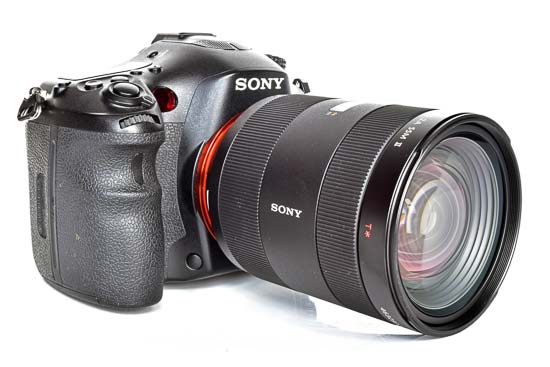 The Sony Vario-Sonnar T* 24-70mm F2.8 ZA SSM II lens mounted on a Sony A99
The Sony Vario-Sonnar T* 24-70mm F2.8 ZA SSM II lens mounted on a Sony A99
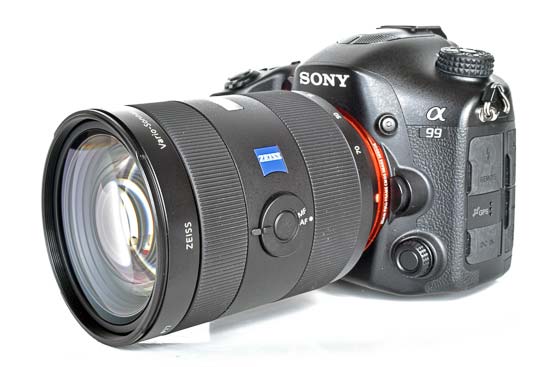 The Sony Vario-Sonnar T* 24-70mm F2.8 ZA SSM II lens mounted on a Sony A99
The Sony Vario-Sonnar T* 24-70mm F2.8 ZA SSM II lens mounted on a Sony A99
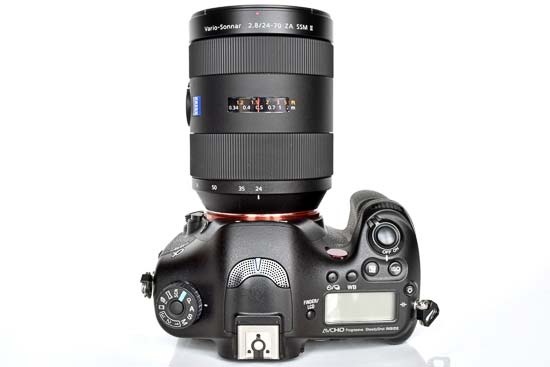 The Sony Vario-Sonnar T* 24-70mm F2.8 ZA SSM II lens mounted on a Sony A99
The Sony Vario-Sonnar T* 24-70mm F2.8 ZA SSM II lens mounted on a Sony A99
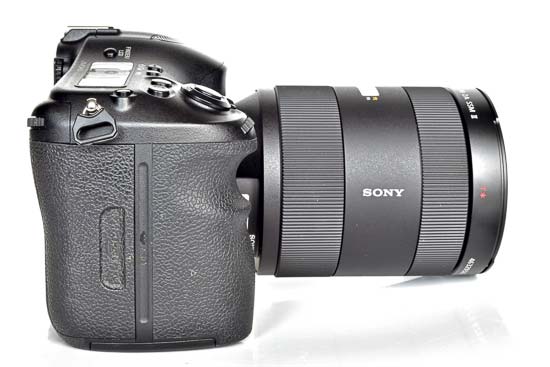 The Sony Vario-Sonnar T* 24-70mm F2.8 ZA SSM II lens mounted on a Sony A99
The Sony Vario-Sonnar T* 24-70mm F2.8 ZA SSM II lens mounted on a Sony A99
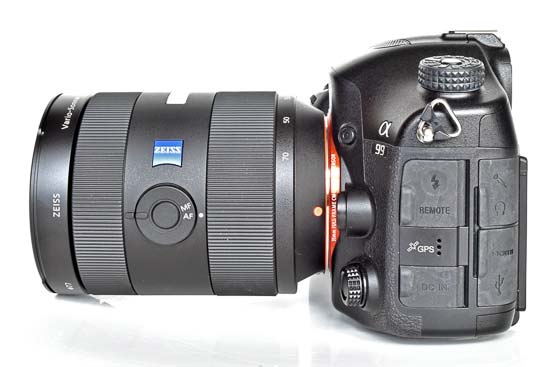 The Sony Vario-Sonnar T* 24-70mm F2.8 ZA SSM II lens mounted on a Sony A99
The Sony Vario-Sonnar T* 24-70mm F2.8 ZA SSM II lens mounted on a Sony A99
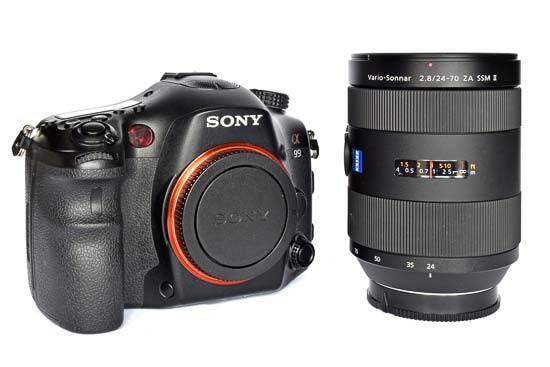 The Sony Vario-Sonnar T* 24-70mm F2.8 ZA SSM II lens alongside the Sony A99
The Sony Vario-Sonnar T* 24-70mm F2.8 ZA SSM II lens alongside the Sony A99
Zooming and manually focussing the 24-70mm F2.8 ZA SSM II is also a cinch as both rings are wide and operate smoothly. The focussing ring does not have hard stops, but there is a focus scale window that displays the 34cm minimum focus distance through to infinity, as well as a the same measurements in feet.
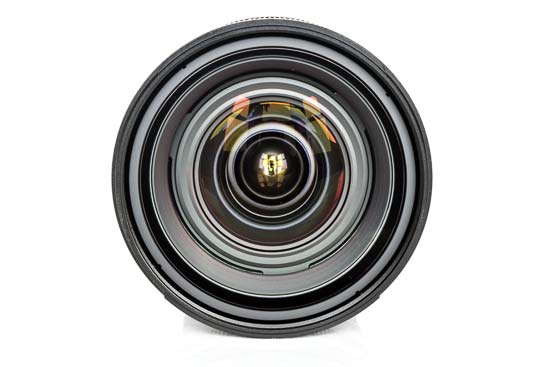 Front of the Sony Vario-Sonnar T* 24-70mm F2.8 ZA SSM II lens
Front of the Sony Vario-Sonnar T* 24-70mm F2.8 ZA SSM II lens
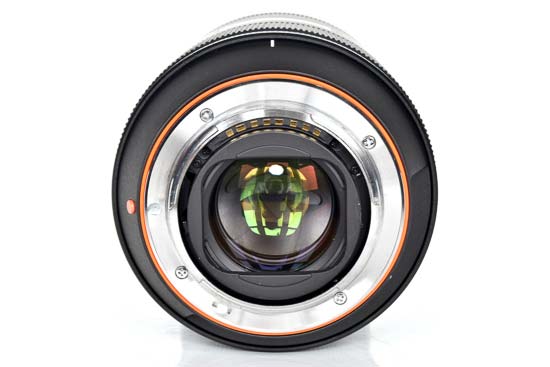 Rear of the Sony Vario-Sonnar T* 24-70mm F2.8 ZA SSM II lens
Rear of the Sony Vario-Sonnar T* 24-70mm F2.8 ZA SSM II lens
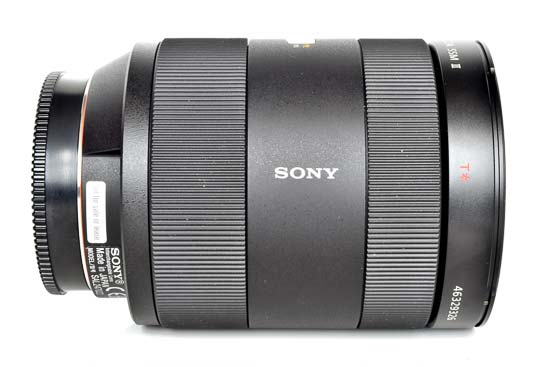 Side of the Sony Vario-Sonnar T* 24-70mm F2.8 ZA SSM II lens
Side of the Sony Vario-Sonnar T* 24-70mm F2.8 ZA SSM II lens
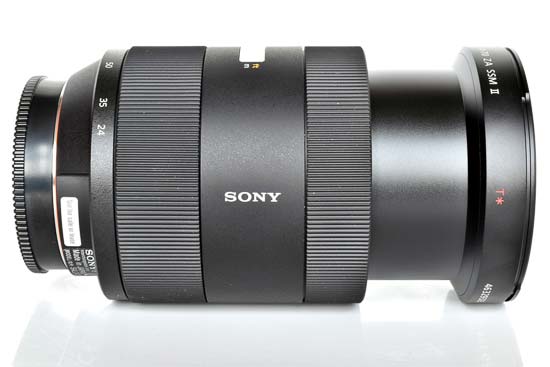 Side of the Sony Vario-Sonnar T* 24-70mm F2.8 ZA SSM II lens at 70mm
Side of the Sony Vario-Sonnar T* 24-70mm F2.8 ZA SSM II lens at 70mm
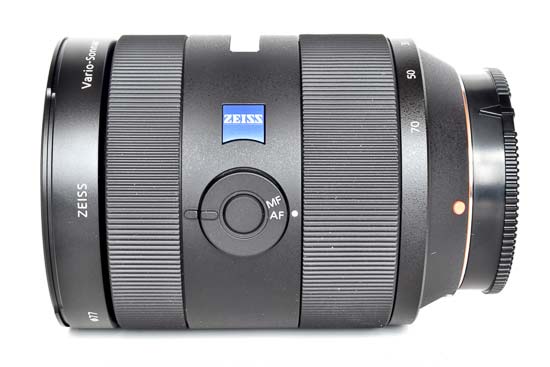 Side of the Sony Vario-Sonnar T* 24-70mm F2.8 ZA SSM II lens
Side of the Sony Vario-Sonnar T* 24-70mm F2.8 ZA SSM II lens
Although the 24-70mm F2.8 ZA SSM II isn’t crammed with features, it’s still not a light lens, weighing in at 974g; 19g heavier than its predecessor. This does however reflect the solid build quality and metal casing, while the lens’ 111mm length and 83mm maximum diameter aren’t particularly large for a full-frame, mid-range zoom lens. But if you do decide to use Sony’s optional LA-EA1 A-mount to E-mount adaptor to attach the lens to an Alpha mirrorless body, the size difference between camera and lens will be noticeable.
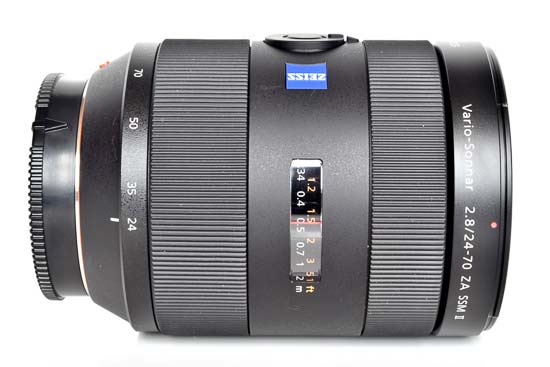 Side of the Sony Vario-Sonnar T* 24-70mm F2.8 ZA SSM II lens
Side of the Sony Vario-Sonnar T* 24-70mm F2.8 ZA SSM II lens
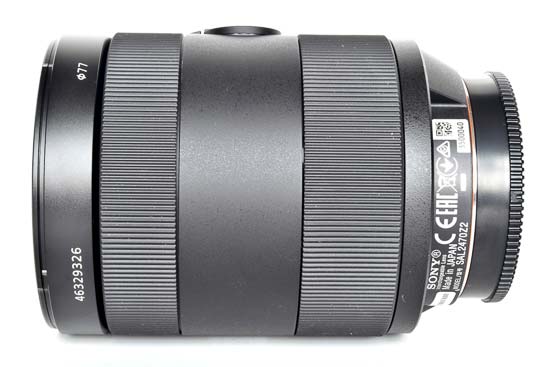 Side of the Sony Vario-Sonnar T* 24-70mm F2.8 ZA SSM II lens in-hand
Side of the Sony Vario-Sonnar T* 24-70mm F2.8 ZA SSM II lens in-hand
 The Sony Vario-Sonnar T* 24-70mm F2.8 ZA SSM II lens in-hand
The Sony Vario-Sonnar T* 24-70mm F2.8 ZA SSM II lens in-hand
Focal Range
The 24-70mm focal range gives an angle of view of 84-34 degrees on 35mm full frame sensor and 61-23 degrees on an APS-C camera.
 Field of view at 24mm
Field of view at 24mm
 Field of view at 70mm
Field of view at 70mm
Focusing
The lens’ internal Super Sonic wave motor isn’t silent, but it is quiet and unobtrusive. Although there is a dedicated manual focussing setting, instant manual focus override is available when in AF mode: just rotate the focussing ring.
While the front of the lens doesn’t rotate during focussing, it does extend approximately 32mm when set at 70mm. But this shouldn’t pose a major problem when attaching filters to the lens’ 77mm thread.
We found the SSM AF motor to be smooth, fast and accurate. We didn’t encounter any instances of focus hunting and tracking AF was certainly fast, though we didn’t have a first-generation 24-700mm F2.8 ZA SSM available for a direct speed comparison.
Chromatic Aberrations
Sony’s premium optical elements and coatings help ensure that chromatic aberration (purple fringing) is rarely an issue. Shoot a high contrast scene and there may be some slight fringing on the edges of frame, but you’ll need to be viewing at 100% image size to notice it, and even then it’s not particularly distracting.
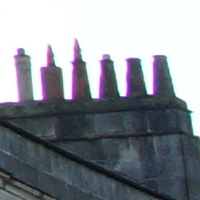 |
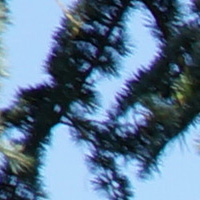 |
Light Fall-off
Fall-off is moderately high at 24mm while wide open at f/2.8, but the vignetting has already subsided at f/4 and gone almost entirely at f/8. Apart from a hint of fall-off in the extreme corners of frame at the other marked focal lengths while set to f/2.8, the 24-700mm F2.8 ZA SSM II doesn’t exhibit any significant fall-off.
 Light fall-off at 24mm
Light fall-off at 24mm
 Light fall-off at 70mm
Light fall-off at 70mm
Distortion
If you’re fond of shooting brick walls, you’ll see that the 24-700mm F2.8 ZA SSM II does produce minor barrel distortion at 24mm and the same degree of pincushion distortion at 70mm. In most real-world scenarios this shouldn’t be noticeable. However, if you do need to correct things in software, finding a dedicated lens profile would be a good idea, as the lens’ slightly uneven distortion won’t straighten absolutely perfectly with regular distortion correction.
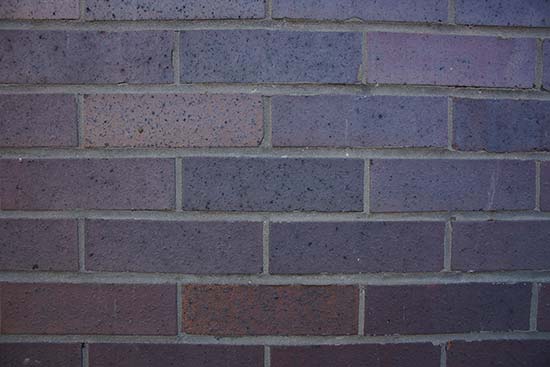 Distortion at 24mm
Distortion at 24mm
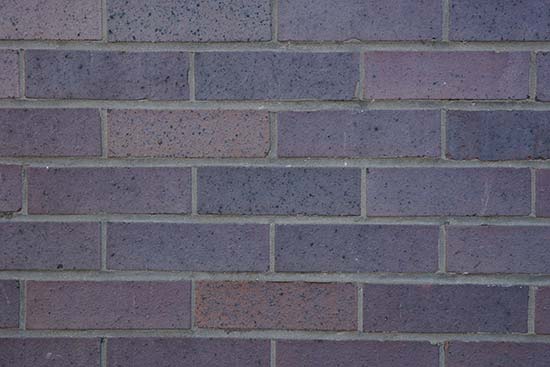 Distortion at 70mm
Distortion at 70mm
Macro
Although this lens isn’t really intended for close-up work, a 34cm minimum focus distance does mean you can get fairly close to your subject. It’s also worth noting that this figure refers to the distance between your subject and the camera sensor, whereas you can actually place the front of the lens as close as 16cm away, even when zoomed in to 70mm, resulting in surprisingly detailed close-up shots.
 Close-up performance
Close-up performance
Bokeh
It isn’t just low light shooting that benefits from the 24-70mm F2.8 ZA SSM II’s large maximum aperture, as this lens also generates very smooth out of focus areas through its use of a nine-bladed diaphragm. This provides smoother bokeh than seven or five-blade designs, however bokeh is a fairly subjective part of a lens’ image quality, so check out these 100% crops to see the 24-70mm F2.8 ZA SSM II’s bokeh quality for yourself.
 |
 |
 |
 |
Sharpness
In order to show you how sharp this lens is, we are providing 100% crops on the following pages.
-
Ease
of Use -
Sample
Images -
Lens
Specs -
Rating &
Conclusion -
Main
Rivals -
Review
Roundup - Comment
